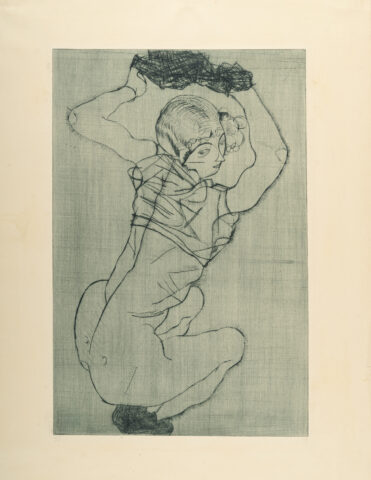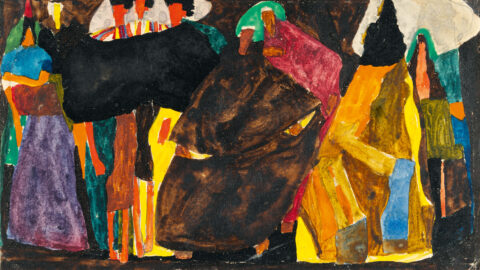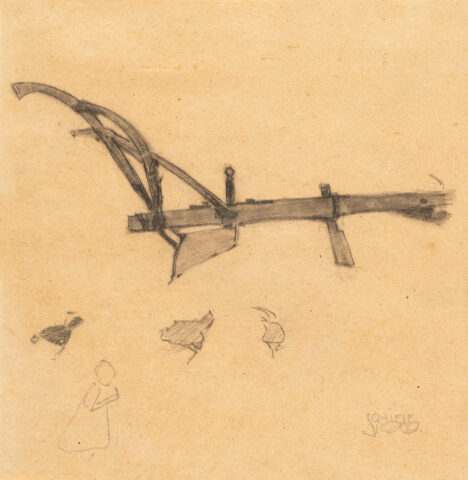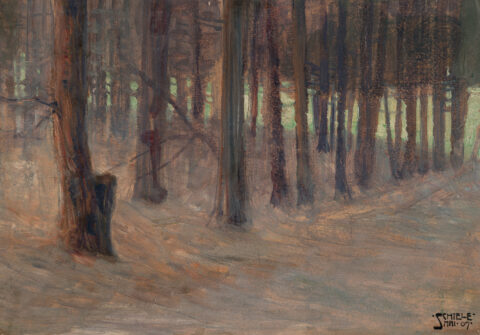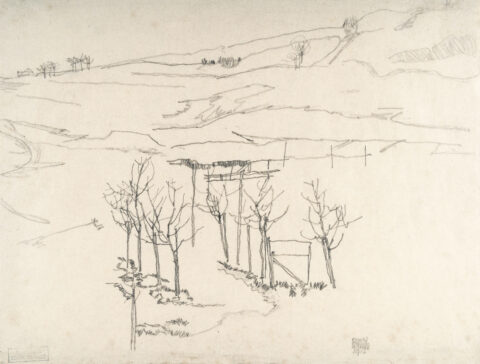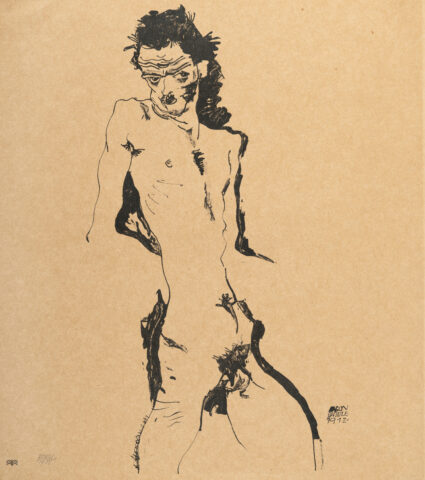
Portrait of August Lederer
Details
Jane Kallir has confirmed the authenticity of this drawing and will be including it in her archive under the number D2455a. Literature: Husslein-Arco, A. & Kallir, J., Egon Schiele, Self-portraits and portraits, Munich/New York, 2011, cat. no.89, p. 201.Exhibitions: New Worlds. German and Austrian Art 1890-1940, Neue Galerie, New York 2001/02; Egon Schiele. The Ronald S. Lauder & Serge Sabarsky Collections, Neue Galerie, New York 2005/06, cat. no.D158, p. 316, with ill. Life in Motion. Egon Schiele/ Francesco Woodman, Tate Liverpool, 2018. Provenance: August Lederer, Vienna, acquired directly from the artist in; Erich Lederer, Vienna & Genf, by descent; Elisabeth Lederer, Genf, by descent; De Pury & Luxembourg Art, Genf, acquired in 1998 from the estate of the aforementioned; collection of Ronald S. Lauder, New York, acquired in 1999; private collection, Europe,acquired from the aforementioned; Christie’s, London 7.2.2013, lot 221; Thomas Le Claire, Hamburg, as of 2014; private ownership, Great Britain.
Descrizione
• Portrait of the important Viennese art patron and collector August Lederer
• Bold drawing with masterfully reduced lines
• From the collection of his son Erich Lederer, who was a great supporter of Egon Schiele
The industrialist August Lederer was one of the most important collectors and art patrons of the Vienna Secession. Together with his wife Serena, he primarily supported Gustav Klimt, from whom they acquired, among many other works, the scandalous ceiling murals “Jurisprudence” and “Philosophy” and, in 1915, the famous “Beethoven Frieze”. They own the most extensive and important Klimt collection at the time. It was also Klimt who introduced his young artist colleague Egon Schiele to August and Serena Lederer in 1912. However, the couple only bought one painting by Schiele for their collection (“Mödling I (Gray City)”, Kallir P 299) and overall remained rather reserved towards his art. However, their fifteen-year-old son, Erich Lederer, became friends with Schiele, who was only six years older. Thanks to a winning lottery ticket given to him by his grandmother, Erich Lederer immediately decided to use the proceeds to support his burgeoning love of avant-garde art. In the winter of 1912/13, Schiele painted a large-format portrait of the boy (Kallir P 235), who would become his most important patron and collector over the next few years. It was probably due to this friendship that Schiele ended up creating the loose series of portrait sketches of August Lederer in 1918, to which the present drawing belongs. At this time, the artist was turning away from the sharp wax crayons he had previously often used and adopting the much more flexible medium of charcoal, with which he created lush, richly contrasting compositions in strong strokes. Schiele captures August Lederer in his typical style with just a few extremely concise lines on pale yellow paper. He depicts the collar and buttons in very few strokes, the body is barely indicated at all. In contrast, Schiele elaborates the facial features, especially the eyes and eyebrows, more carefully and individually. He gives the tie significant volume with contrasting, wide strokes. It is not known whether these fine drawings were created in preparation for a portrait commission by August Lederer. Egon Schiele died of Spanish flu in October of the same year at the age of just 28. In comparison to the more academically rendered, traditional portraits from Schiele’s youth (see Portrait of Schiele’s Uncle, lot 423), this drawing, created just eleven years later, shows his fully developed, characteristic style. In 1938, two years after August Lederer’s death, the family business was expropriated and “Aryanized” by the National Socialists; the private art collection and real estate were confiscated and forcibly expropriated. His widow Serena Lederer fled to Budapest and from there fought in vain to regain her art collection until her death in 1943. Most of the valuable collection, which had been kept in Immendorf Castle near Marchfeld as of 1944, was burned shortly before the end of the war in May 1945 under unclear circumstances, including Schiele’s painting “Mödling I”. Only a few works remain, as well as those that were previously owned by Erich Lederer. This also applies to the Schiele portrait offered here, which he inherited from his father and saved when he fled.
* Tutte le informazioni includono la commissione a carico dell'acquirente (27%) senza IVA e senza garanzia. Salvo errori.
** Tutte le informazioni più la commissione a carico dell'acquirente e l'IVA e senza garanzia. Salvo errori.
*** Con riserva: L'offerta è stata accettata al di sotto del limite. L'acquisizione dell'opera potrebbe essere ancora possibile nella nostra vendita post-asta.
R = Le opere d'arte regolarmente tassate
N = Opere d'arte soggette a tassazione differenziata e provenienti da un paese non UE
Non è consentita la riproduzione e la distribuzione privata o commerciale di tutte le illustrazioni delle opere esposte nell'archivio della mostra e dell'asta. Tutti i diritti riservati.



